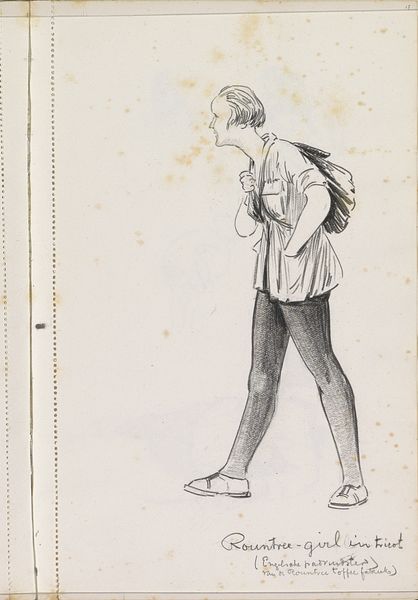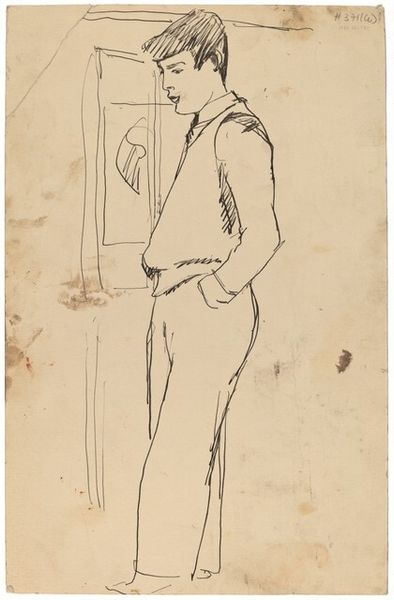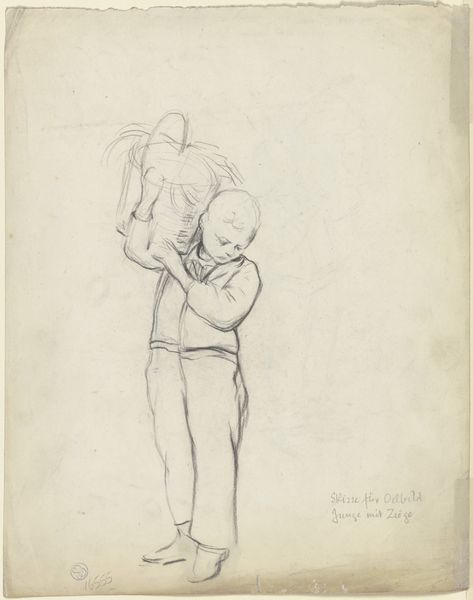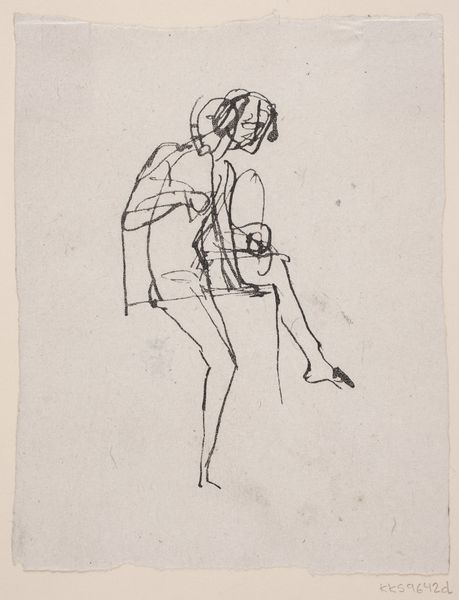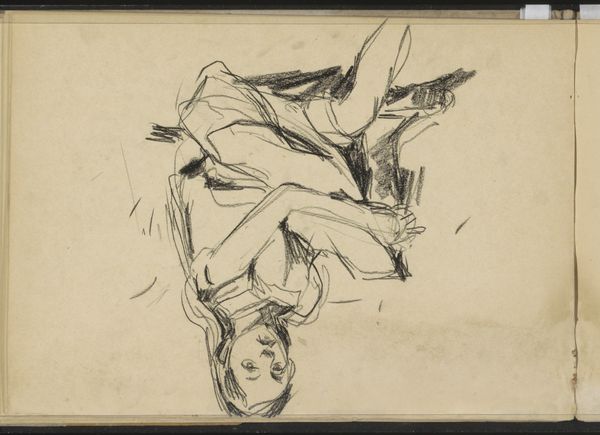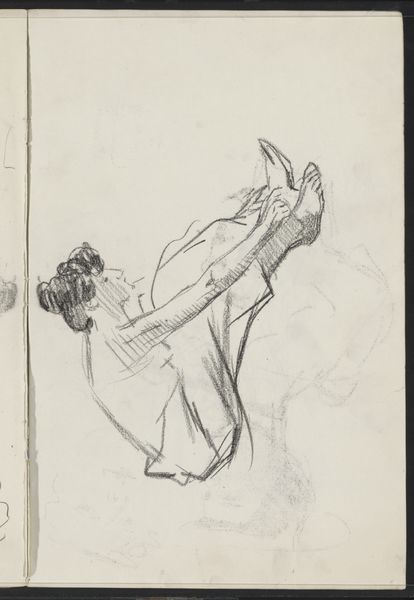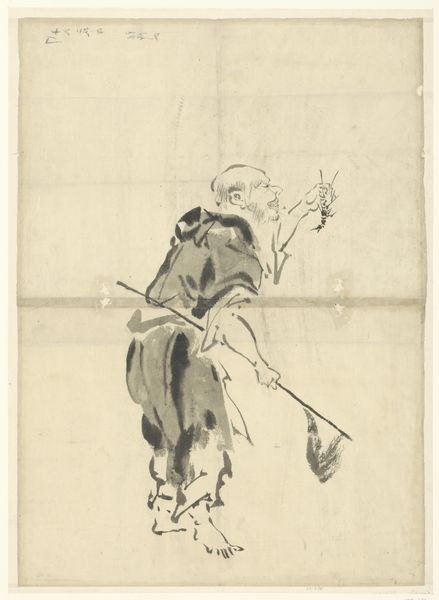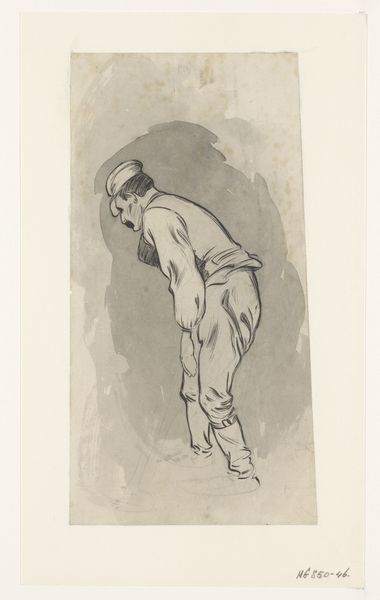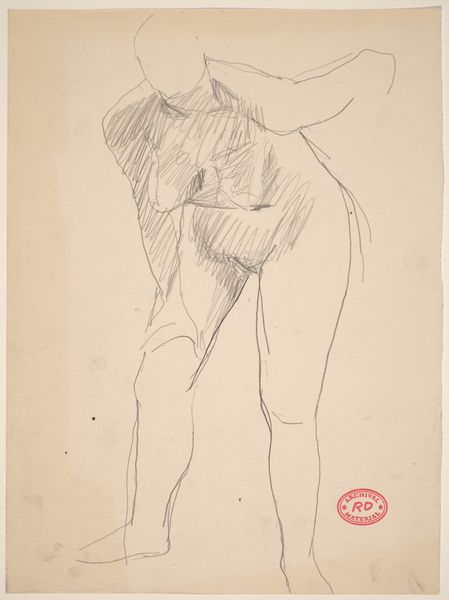
drawing, paper, ink
#
portrait
#
drawing
#
imaginative character sketch
#
quirky illustration
#
childish illustration
#
cartoon like
#
cartoon based
#
narrative-art
#
cartoon sketch
#
figuration
#
paper
#
personal sketchbook
#
ink
#
sketchbook drawing
#
genre-painting
#
cartoon style
#
cartoon carciture
#
modernism
Dimensions: height 205 mm, width 148 mm
Copyright: Rijks Museum: Open Domain
Curator: This playful ink drawing, entitled "Vader draagt zijn zoon op de schouders," or "Father carries his son on his shoulders," comes to us from Miep de Feijter, circa 1928 to 1941. Editor: There's a lovely simplicity to it, a feeling of lightheartedness despite the limited palette. It feels like a stolen moment, quickly sketched, with such bold use of ink and form. Curator: The sketch, done in ink on paper, brings forth questions surrounding traditional family roles in the early 20th century. Who had the luxury to share moments like this? De Feijter’s style embraces a flattened perspective, reminiscent of modernism but also echoing themes present in children’s book illustrations, making one question the intended audience. Editor: Absolutely. It feels very much of its time but has a contemporary feel too. Was de Feijter intentionally commenting on domesticity, or was it purely a personal reflection? Is there commentary regarding class dynamics present in the sketch with the child riding carefree, contrasted against the burdened look of his father carrying him on his shoulders? Curator: It also calls into question what opportunities might not have been afforded to female artists. Did portraying women in the art world force them into gender-stereotypical works that kept them excluded from mainstream attention? Editor: De Feijter clearly possessed a unique artistic perspective, but her placement within these societal structures influences the way we perceive and interact with her artworks even today. Considering where the artist was trained or who the subject is of this artwork allows for more interpretation. We could even begin to imagine potential historical references that went unnoticed with my quick initial impression. Curator: Exactly. This small drawing can open up much broader considerations of the history of family structures and artistic expressions from within the cultural dynamics of its period. Editor: I find that fascinating—that something seemingly so simple could hold such complexity, and inspire further questioning regarding a particular era in history and beyond.
Comments
No comments
Be the first to comment and join the conversation on the ultimate creative platform.
